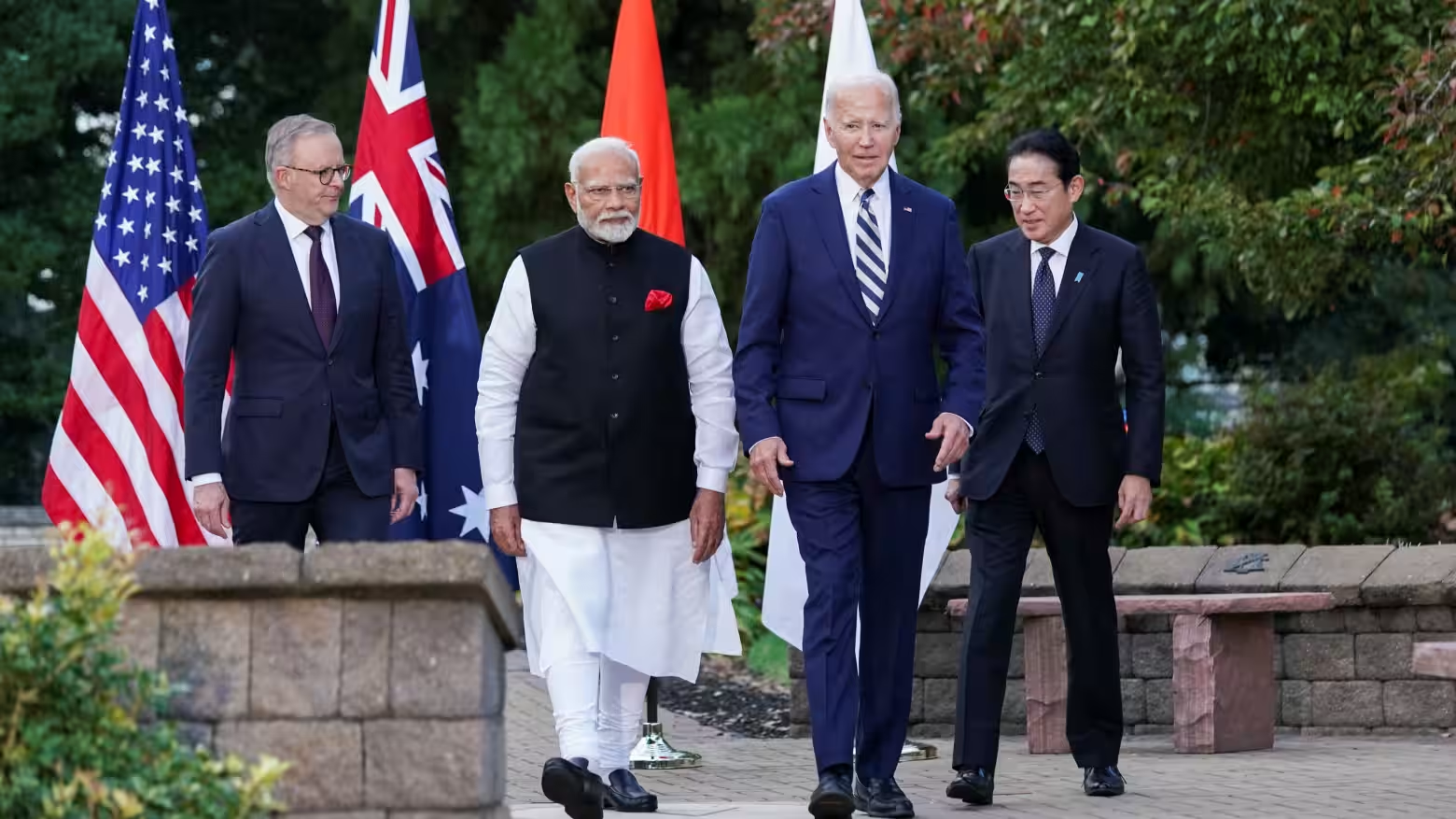U.S. Asia policy over the last 40 years has been a success. There have been no major interstate wars in East Asia since 1979. The United States has built a dense and increasingly collaborative network of alliances and partnerships that enjoys bipartisan support. American private sector investment in Asian countries with the region’s largest economies dwarfs that of any other country, and the United States is the primary destination for foreign direct investment from all major economies in Asia (except China). Even as democracy erodes elsewhere, many countries in the region remain vibrant democracies. And thanks to a strong basis of bipartisan agreement, U.S. policymaking in the region can often rise above the gridlock and polarization in Washington.
With his victory in the 2024 presidential election, Donald Trump will inherit a formidable Asia policy that has been passed down through Republican and Democratic administrations. President Joe Biden built his impressive record in the region around this consensus. The diplomatic partnership among Australia, India, Japan, and the United States known as the Quad, or Quadrilateral Dialogue, which Biden elevated from a ministerial-level forum to a leaders’ summit, began under George W. Bush’s administration as a joint task force to rescue victims of the 2004 Indian Ocean tsunami and was revived by the Trump administration as a regular meeting of the members’ foreign ministers. (Biden acknowledged the Quad’s bipartisan lineage at the first summit held during his presidency.) Biden’s initiatives on U.S. military force posture, semiconductor technology controls, and trilateral relations with Japan and Korea all have roots in the Bush, Obama, or Trump administrations. And the new components his presidency added, such as AUKUS (the submarine and defense technology partnership among Australia, the United Kingdom, and the United States), enjoy broad support in Congress and will likely endure for administrations to come. Once in office, Trump will not lack for potential avenues for engagement in Asia.
Yet as the United States learned from 1919 to 1941, successful strategies work until they don’t. Taken in its parts, American interwar statecraft, driven by the assumption that economic interdependence and multilateral diplomacy could keep the peace, was more proactive and innovative than it had ever been. But it was not enough to stave off global conflict. With catastrophic consequences, experts failed to appreciate the danger of Japan’s navy surpassing U.S. capabilities in the Pacific, the growing appeal of Japan’s anti-Western narratives, or the hollowness of European imperial power in the region.
The incoming Trump administration would be wise to remember this history. The stakes today are familiar: if China had its way, it would force Japan out of the East China Sea, overwhelm the Philippines and other countries in the South China Sea, coerce Taiwan into accepting Beijing’s authority and severing any meaningful connections to the United States and Japan, and establish a military base structure throughout the region that would corner India and Australia and control the sea lanes that account for half or more of U.S. allies’ imports. China is pursuing the most revisionist strategy of any state since the end of the Cold War and the most dangerous since 1945, and the U.S. alliance system is the only thing keeping it in check. As China’s rising military power chips away at U.S. dominance, the United States has dwindling margin for error.
The Trump administration does not need to invent a new Asia strategy out of whole cloth. But it does need to determine what is working and what is not, and it should shore up the weaknesses in the United States’ current approach. It must revive American economic influence in the region, accelerate efforts for collective defense, make disciplined and consistent outreach to countries that may tilt toward China, and clarify the long-term goals of competition with Beijing. The new president will have a strong foundation to build from, but the scale of the threat means there is much more work to be done.
Although U.S. market power in Asia remains strong, American economic statecraft has atrophied. In 2018, the Lowy Institute’s annual Asia Power Index lowered the U.S. ranking for economic influence in the region after the first Trump administration’s withdrawal from the Trans-Pacific Partnership, a trade agreement that was meant to bind Asia’s more open economies, including Australia, Japan, Malaysia, and Singapore, together to gain leverage against China. The Indo-Pacific Economic Framework for Prosperity, the Biden administration’s 2022 initiative to effectively replace the TPP, has made little headway. As a result, China is much better positioned than before to rewrite the rules for trade, infrastructure, and investment in key parts of Asia. The Trump administration now needs to get serious about shaping regional and global conventions around digital trade, anticorruption, and intellectual property rights to counter Beijing’s efforts to bend weaker states to its will and obstruct U.S. economic access.
Trump, for his part, has criticized both the TPP and IPEF, arguing that traditional trade agreements take jobs from American workers. Instead, he has threatened to impose 60 percent tariffs on Chinese goods and a universal ten percent tariff on imports. In addition to exacerbating inflation at home, these strongly protectionist measures would push other countries closer to China and obstruct U.S. cooperation with like-minded states such as Australia and Japan. Last week, at the Asia Pacific Economic Cooperation summit in Peru, Chinese leader Xi Jinping took a slew of meetings with trade partners and condemned efforts to “[hinder] economic cooperation” as “reversing the course of history,” effectively positioning Beijing as the standard-bearer of the international economic order. The Trump administration will need to recognize that the United States cannot compete with China while threatening tariffs that target the very partners it needs to thwart Beijing’s attempts to change established international economic rules.
The United States will also need to improve its military readiness in the region. Here, the interwar years offer a lesson. U.S. advances in amphibious warfare strategies, replenishment of ships at sea, and submarine and aircraft carrier operations in the 1920s later helped the Allies win in World War II, but they did not stop the conflict from breaking out in the first place. American innovation today, such as the Pentagon’s Replicator program to rapidly field new high-tech weapons, is equally impressive—and equally insufficient. The United States and its allies will have to step up their defense production if they are to deter China, whose force buildup is outpacing their own. The U.S. and allied militaries also desperately need more munitions and reliable access to critical minerals such as germanium, 70 percent of which is mined in China and Russia, to build advanced systems such as thermal detectors for missiles and fighter aircraft. Trump should press Congress to approve multiyear defense contracts; work with U.S. partners to expand access to critical minerals; loosen some export control rules so that the United States can better integrate its defense production with that of its allies; and push for procurement reform that breaks the hold of legacy platforms on access to Pentagon funding and makes investment in newer, more innovative equipment possible.





